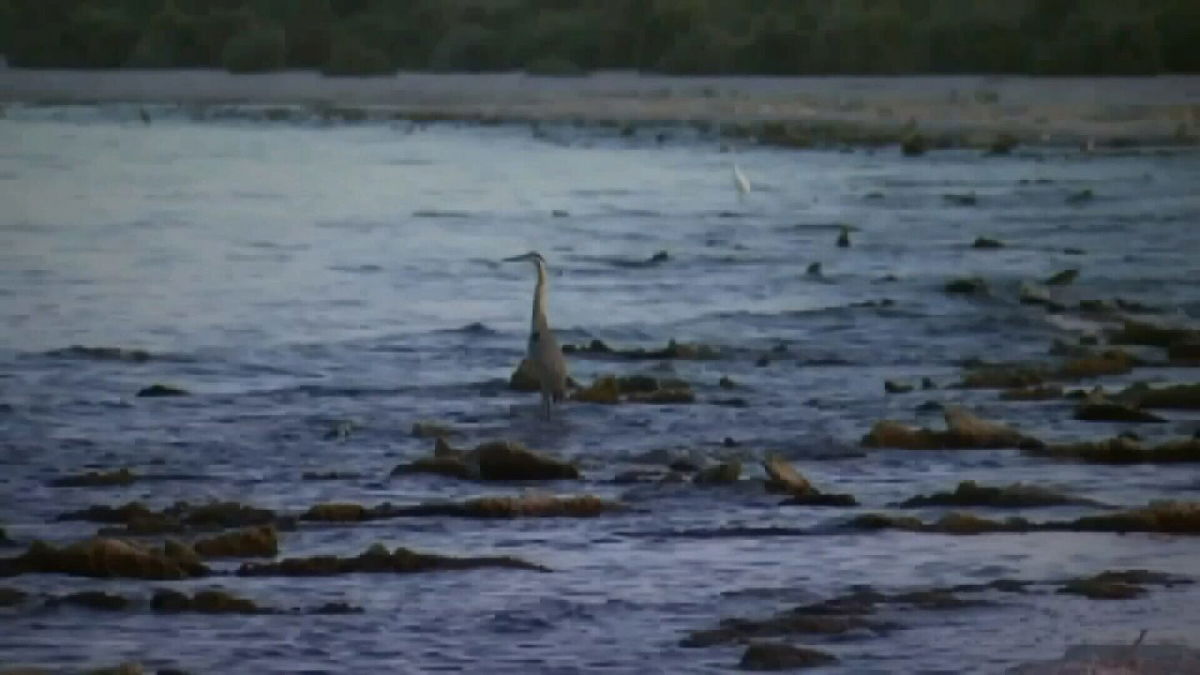Water delivery agreement to benefit Salton Sea, Torres Martinez Tribe

A natural resources investment company announced today it intends to allocate up to 5,000 acre-feet of water annually to the Salton Sea and Torres Martinez Desert Cahuilla Indian Tribe as part of a public-private partnership intended to help reinvigorate the dying Salton Sea and ensure reliable potable water for communities on tribal land.
Check Out our Emmy Award Winning Series on the Issues at the Salton Sea
Los Angeles-based Cadiz Inc. said that an agreement with the Salton Sea Authority, tribe and Coachella Valley Water District will be part of a wider water distribution enterprise known as the Cadiz Water Conservation & Storage Project, which originally focused on drawing water from the Colorado River and delivering it to Southern California metropolitan areas via a single pipeline.
The company has since expanded the project to include a 220-mile underground pipeline that will connect to the State Water Project, comprised of a network of aquifers, lakes and storage facilities, tied into the Sacramento-San Joaquin Delta.
The pipeline was acquired from El Paso Natural Gas and was originally constructed to transport oil and gas, but will be retrofitted for water conveyance, according to Cadiz.
A Supplemental Water Supply Agreement between the company, Salton Sea Authority, Torres Martinez tribe and CVWD establishes that 5,000 acre-feet of water will be delivered via the pipeline for 50 years.
"The entirety of these actions in support of dedication will be at the sole cost and expense of Cadiz and at no cost to Torres Martinez and the Salton Sea Authority," according to the compact.
"As California's water crisis deepens, Cadiz is committed to ensuring that disadvantaged communities are not left behind," company Chairwoman Susan Kennedy said. "Cadiz's mission is to capture water that is currently lost to evaporation, store it in the desert and transport it through pipelines that once carried oil by retrofitting those pipelines to carry water."
In addition to the pipeline, Cadiz said that it is prepared to install water treatment devices on existing and new groundwater wells within tribal land, providing a means to filter out arsenic, nitrates and other contaminants. The issue of water-borne threats has caused significant habitation challenges on several of the Thermal-based tribe's properties in recent years, and is at the forefront of ongoing problems plaguing the Oasis Mobile Home Park.
"Water is life,'' Torres Martinez tribal Chairman Thomas Tortez said. "Conserving water that would otherwise be lost to hyper-salinity and evaporation and using it to protect life in and around the Salton Sea is the best use of this precious resource.''
The agreement specified that about 1,500 acre-feet of piped water will be furnished to the tribe, while 3,500 acre-feet will go to the Salton Sea Authority. The latter will have discretion to determine how much of the stock will go into the receding sea and how much will be delivered to surrounding communities with limited access to safe drinking water.
Supplemental water deliveries, whenever available, will be provided to the CVWD for retail use, and Cadiz noted it will seek payments for the deliveries to at least cover its baseline distribution expenses.
The company did not disclose what it generally expects to net in investment returns under the project, and there was no timetable given for when the pipeline retrofit might be finished.
On Tuesday, the Riverside County Board of Supervisors approved a $4.12 million contract with an engineering firm to manage the Salton Sea North Lake Pilot Demonstration Project, considered the first major step forward in restoration of the Salton Sea.
The project will entail establishing 156 acres of shallow and deep marine habitat. About one mile of shallow water is slated to run along the sea's north shoreline.
The sea has been allowed to erode to the point of eutrophication, killing off animal and plant life because of extreme salinity. An east wind in September 2012 created conditions for a sulphuric stench that wafted across the county into the Los Angeles Basin. The overpowering odor lingered for hours.
Dust clouds kicked up on parts of dry lake bed have raised other health concerns.
Water reclamation by local agencies and Mexico, plus the loss of Colorado River supplies that originally fed the Salton Sea, have caused water levels to drop and salinity to spike.




